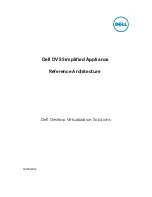
66
Brocade Network Advisor SMI Agent Developer’s Guide
53-1002169-01
CEE switch support
3
VLANs
Virtual Local Area Network (VLANs) provide the capability to overlay the physical network with
multiple virtual networks. VLANs allow you to isolate the network traffic between virtual networks
and reduce the size of administrative and broadcast domains. A VLAN contains end stations that
have a common set of requirements that are independent of physical location. You can group end
stations in a VLAN even if they are not physically located in the same LAN segment. VLANs are
typically associated with IP subnetworks and all the end stations in a particular IP subnet belong to
the same VLAN. VLAN membership is configurable on a per-interface basis.
Data model
There is no SNIA model for VLANs. Some aspects of the Distributed Management Task
Force (DMTF) model have been considered while others are completely proprietary. The following
detailed notes describe the class diagram as shown in
Figure 30
.
•
The VLAN is a collection of protocol endpoints defined at the scope of the switch and is
represented by an instance of Brocade_VLAN associated to the scoping system, which is the
Brocade_EthernetSwitch through Brocade_VLANInEthernetSwitch.
•
The property Brocade_VLAN.ElementName gives the VLAN's user-friendly name.
•
Each VLAN may contain zero or more members. Each VLAN member is represented by an
instance of Brocade_VLANEndPoint. The composition is through
Brocade_VLANEndPointInVLAN.
•
The member is also defined at the scope of the switch associated to the scoping system, which
is the Brocade_EthernetSwitch through Brocade_EthernetSwitchHostedVLANEndPoint.
•
Each Brocade_VLANEndPoint instance represents a concrete Brocade_LAG or
Brocade_LANEndPoint of a Brocade_EthernetPort that has been added to the Brocade_VLAN.
This relationship between the Brocade_VLANEndPoint and the Brocade_LANEndPoint is
represented as Brocade_VLANEndPointOfLANEndPoint. And the relationship between the
Brocade_VLANEndPoint and the Brocade_LAG is represented as
Brocade_VLANEndPointOfLAG.
•
There is one Brocade_VLANService instance per Brocade_EthernetSwitch. This hosting is
represented by Brocade_VLANServiceInEthernetSwitch.
•
The capabilities of the service are represented by an instance of
Brocade_VLANServiceCapabilities associated to the service through
Brocade_VLANServiceElementCapabilities. The maximum number of VLANs that can be
created on the switch and the methods supported by the service are reported in this
capabilities instance.
•
Brocade_VLANService provides extrinsic methods to create and delete VLANs, and add and
remove members from an existing VLAN.
•
Brocade_VLAN can be created using the Brocade_VLANService.CreateVLAN() extrinsic method.
Refer to mof content for details on the parameters.
•
The path of the newly created Brocade_VLAN instance is returned in the output parameter
VLAN. The Brocade_VLAN will be associated to the appropriate Brocade_EthernetSwitch
instance on which it is defined.
•
Members may be added to an existing Brocade_VLAN instance using the
Brocade_VLANService.AddMembers() extrinsic method. Refer to BrocadeLAG.mof for details
on the parameters.
Содержание Brocade 8/24c
Страница 6: ...vi Brocade Network Advisor SMI Agent Developer s Guide 53 1002169 01 ...
Страница 20: ...8 Brocade Network Advisor SMI Agent Developer s Guide 53 1002169 01 Discovering a fabric and a host 1 ...
Страница 32: ...20 Brocade Network Advisor SMI Agent Developer s Guide 53 1002169 01 Fabric profile 3 FIGURE 9 Fabric profile ...
Страница 158: ...146 Brocade Network Advisor SMI Agent Developer s Guide 53 1002169 01 Life cycle indications 4 ...
Страница 168: ...156 Brocade Network Advisor SMI Agent Developer s Guide 53 1002169 01 Brocade Network Advisor SMI Agent Error Codes A ...
















































